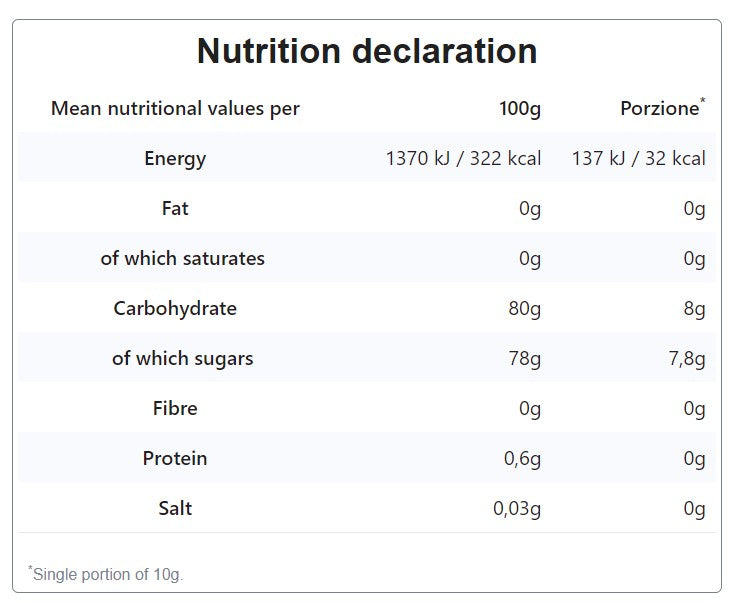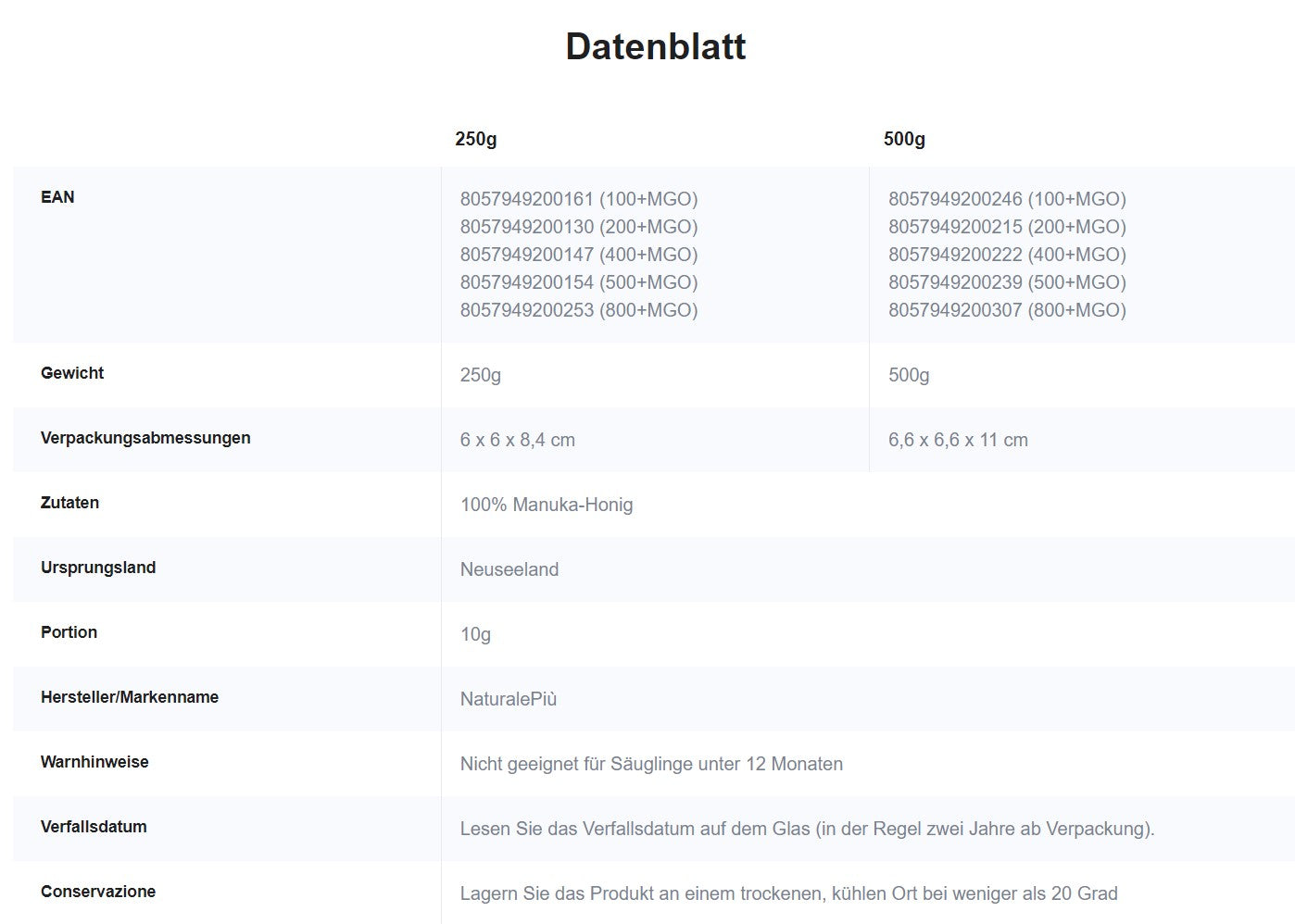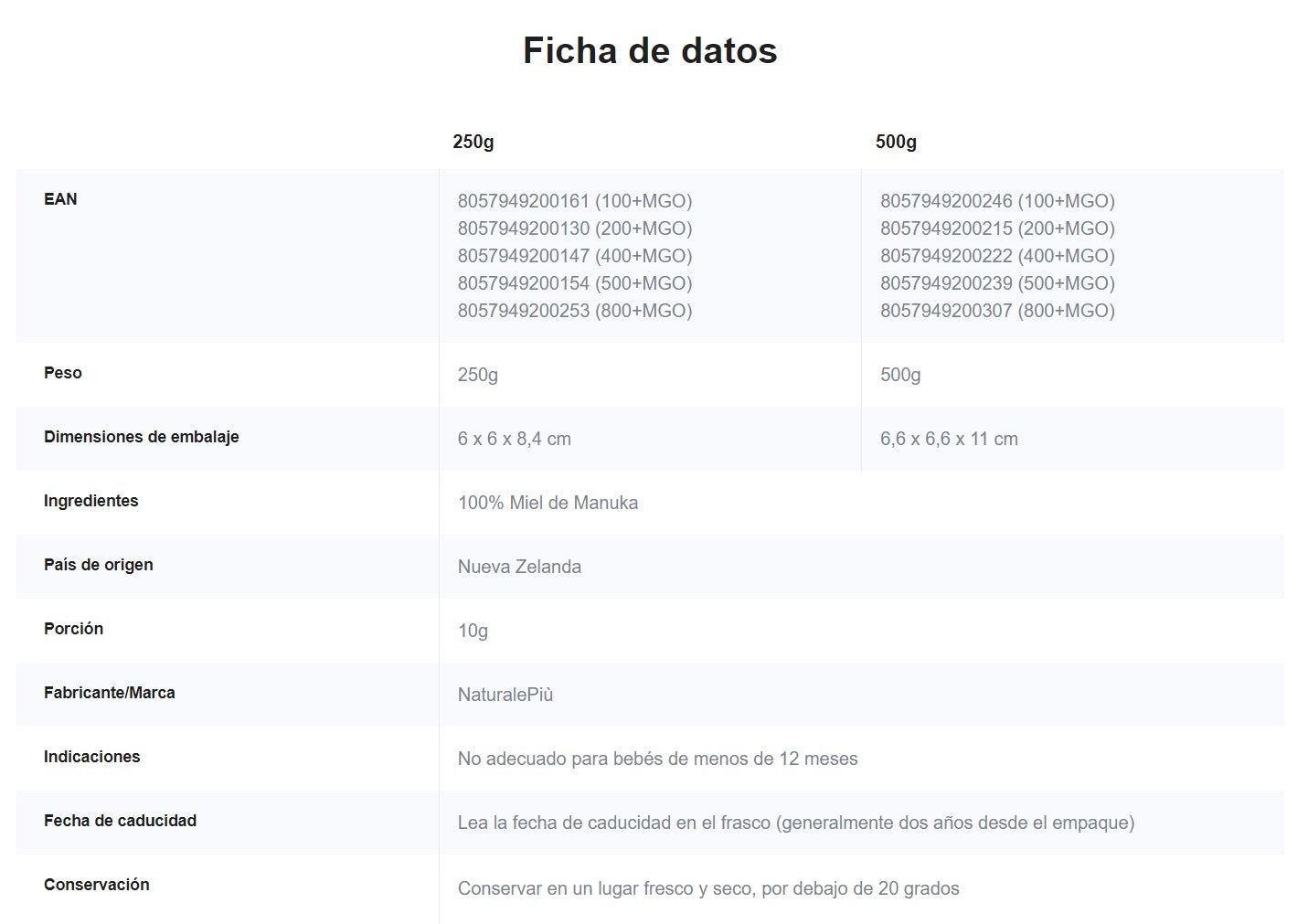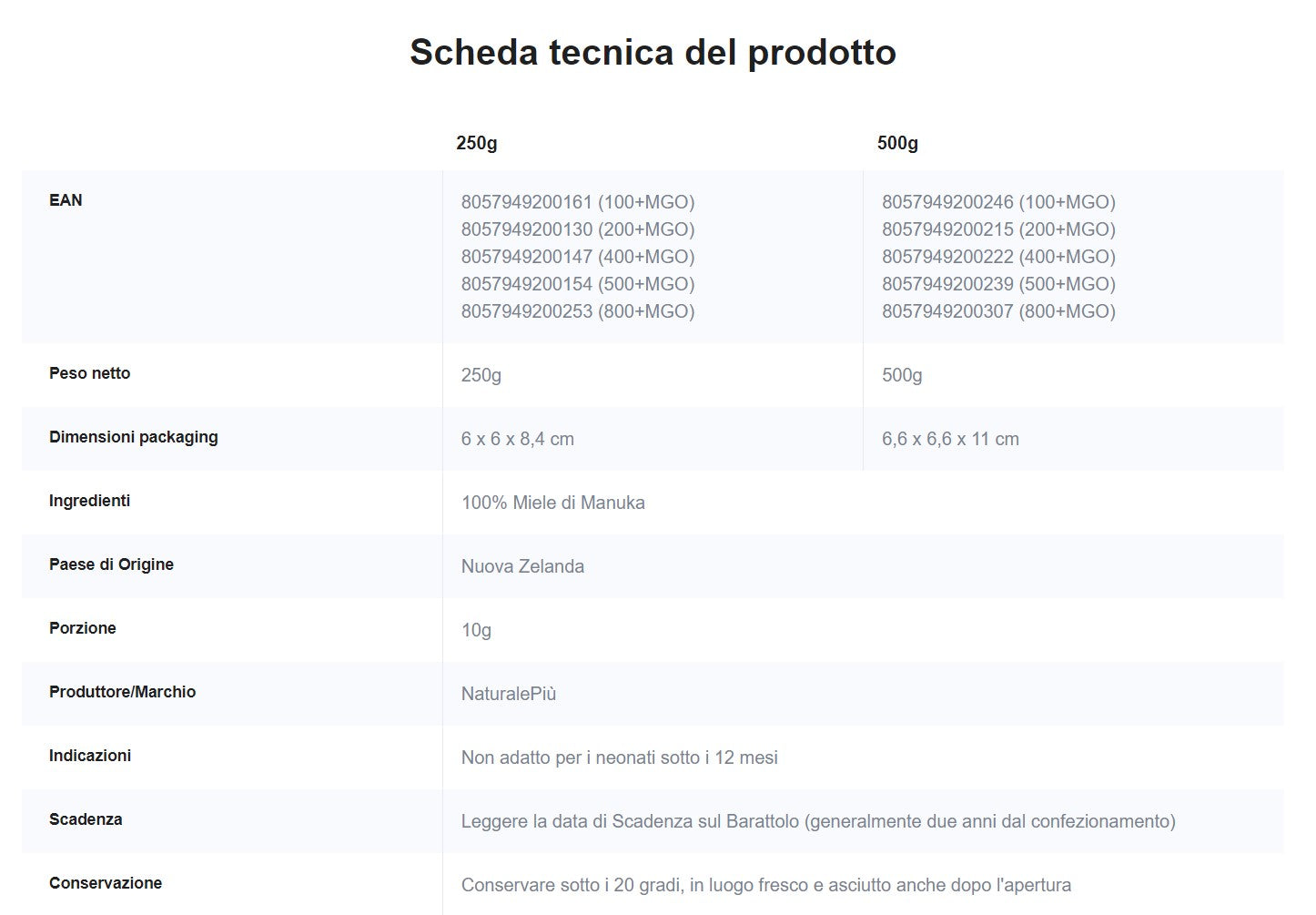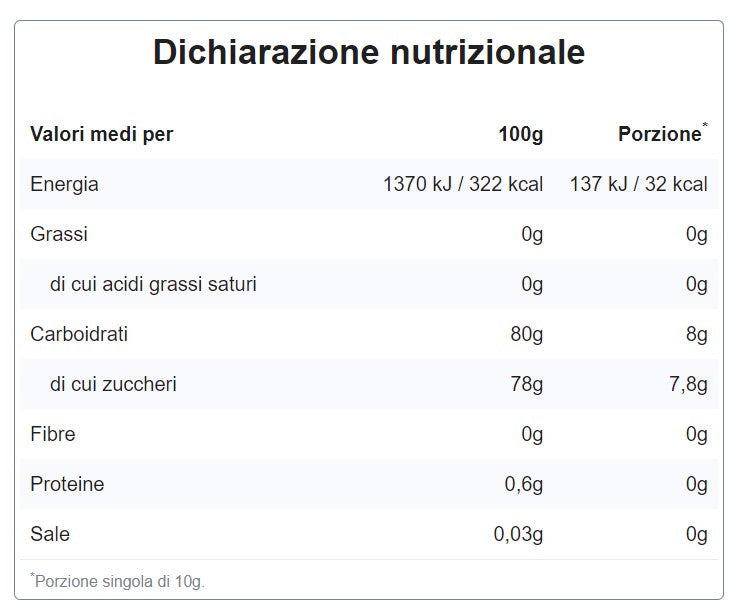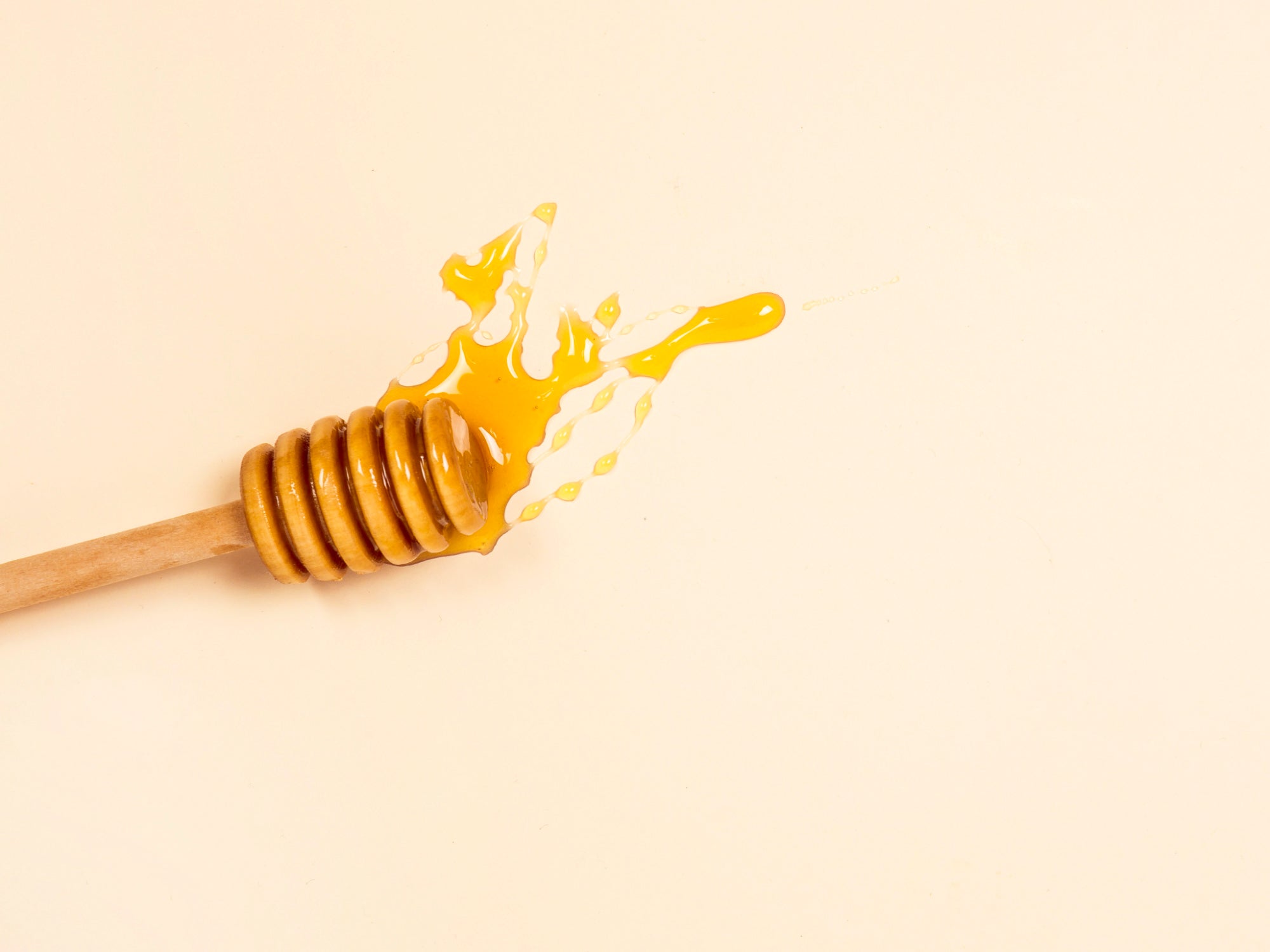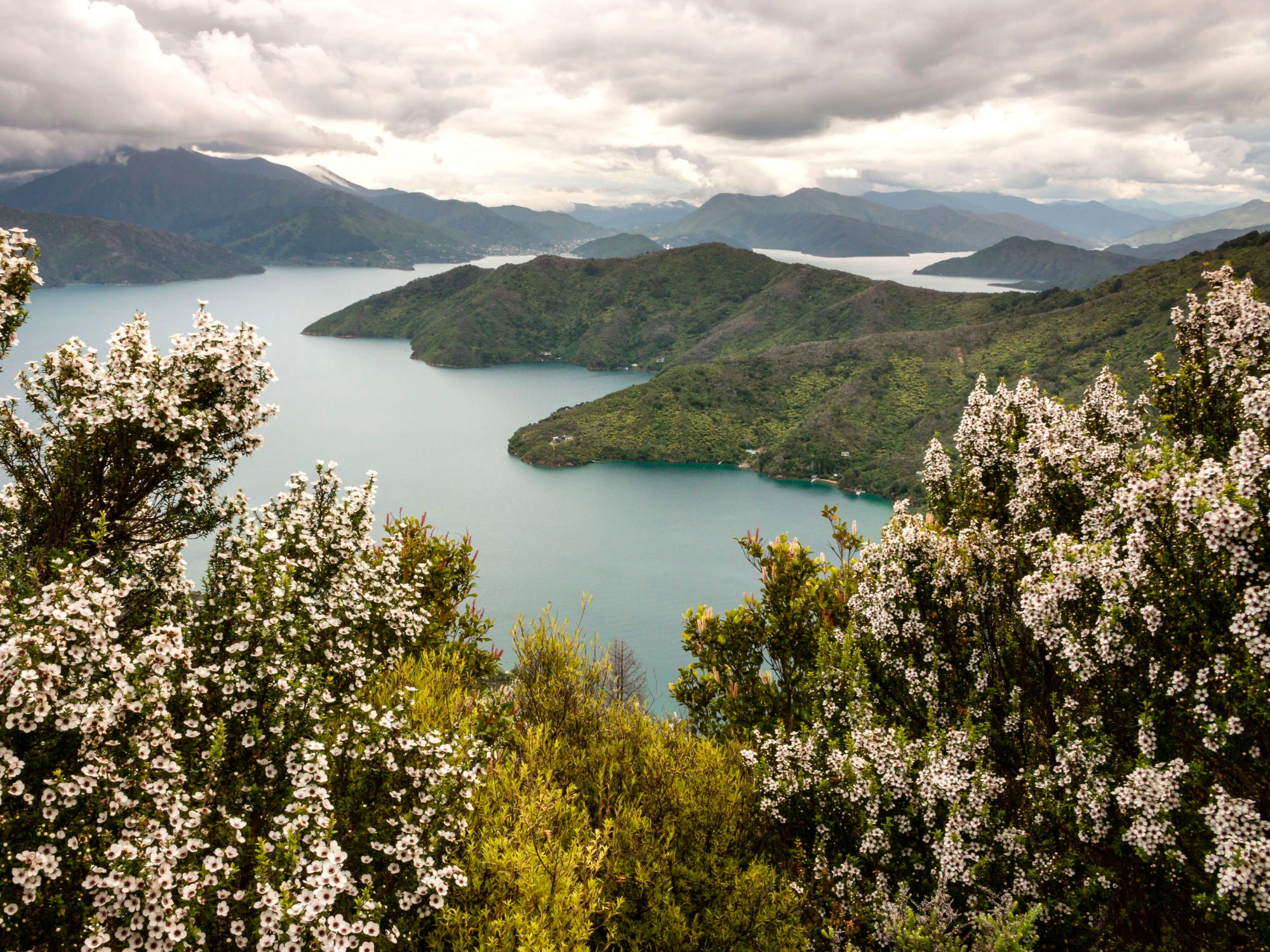
- Prezzo di listino
- €24,99 EUR
- Prezzo unitario
- per
Impossibile caricare la disponibilità di ritiro
Features
-
Physical properties of Manuka Honey
Manuka honey is a special variety of honey with excellent properties. Its colour is orange-yellow and its texture is very dense and creamy. Its aroma is intense and its flavour is strong and decisive yet unmistakably sweet.
-
Manuka Honey from New Zealand
The manuka plant grows, above all, in New Zealand, but also in several regions of Australia. In New Zealand, there are vast hilly areas covered with manuka, which offers a suitable habitat for many animal species, including bees that, from the plant nectar, produce a honey with excellent capabilities.
-
Certifications
Each lot of Manuka honey is individually tested by accredited laboratories to certify its Methylglyoxal classification, which indicates its concentration. Test results are available to guarantee an authentic and high-quality product as indicated on the label.
Manuka Honey
100% Pure and Natural
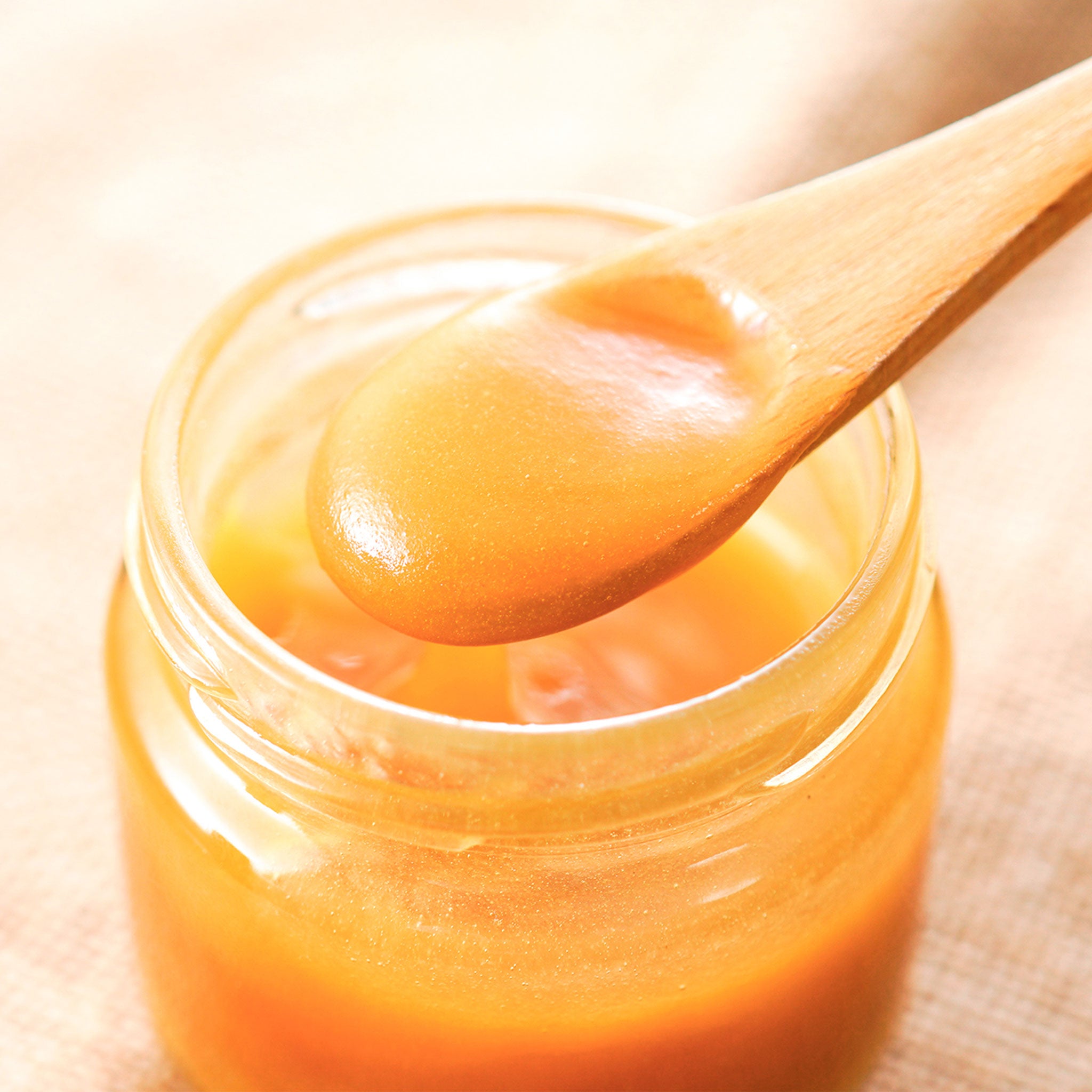
Active and Raw Manuka Honey
Manuka honey is a special variety of honey with excellent properties. Its colour is orange-yellow and its texture is very dense and creamy. Its aroma is intense and its flavour is strong and decisive yet unmistakably sweet.
FAQ
Useful information
What is Manuka honey?
What is Manuka honey?
Manuka honey is a special variety of honey with excellent properties. Produced in New Zealand, it is particularly creamy and fragrant, with an intense orange colour! For almost twenty years, researchers tried to identify the mysterious unknown factor that makes Active Manuka Honey so extremely different from common honey. A team of German food chemists from the Technical University of Dresden were finally able to identify methylglyoxal as the active ingredient giving manuka honey it its properties, which until then had been named UMF, or Unique Manuka Factor.
The origin of Manuka
The origin of Manuka
The manuka plant grows, above all, in New Zealand, but also in several regions of Australia. Captain James Cook gave it the official botanical name of Leptospermum scoparium, because he thought its disorderly branches made the shrub look like a broom, or scopa in Latin. The manuka plant can grow to various heights, from 5 centimetres of cover crop to 15 metre tall tree, though it usually appears as shrub of a height between 2 and 5 metres. It is defined as a ’pioneer plant’, as it is often the first to colonize deforested areas. For this reason, in New Zealand, there are vast hilly areas covered with manuka, offering lovely fragrant and sweeping blooms of white flowers. Manuka offers a suitable habitat for many animal species, including bees that, from the plant nectar, produce manuka honey with excellent properties. For this reason, beekeepers tend to place their beehives near to the plants in uncontaminated natural surroundings, in order to produce fine manuka honey.
UMF (Unique Manuka Factor)
UMF (Unique Manuka Factor)
For many years, scientists were unable to isolate the ingredient responsible for the properties of manuka honey. It was agreed to call this missing ingredient Unique Manuka Factor, or UMF. Its intensity of action was compared to the effectiveness of that of phenolic acid against various bacteria, and was classified, for example, as UMF10 if it proved as effective as a 10% phenol solution. A plus sign (+) was added to indicate an even greater degree of effectiveness (e.g. UFM10+ or UFM20+). This form of grading was considered satisfactory for many years, even though there were no accurate and reproducible tests to indicate exactly the amount of active ingredient in a batch of manuka honey. Only thanks to the discoveries of a team of dedicated chemists was the Unique Manuka Factor finally identified as methylglyoxal.
What is Methylglyoxal?
What is Methylglyoxal?
A team of food chemists led by Thomas Henle at the Technical University of Dresden finally managed to identify the Unique Manuka Factor as the compound methylglyoxal. Methylglyoxal is the active ingredient in manuka honey responsible for its properties, and for differentiating it from any other honey in the world. The amount of methylglyoxal in a honey sample can now be determined as a precise percentage (e.g. 100mg of methylglyoxal in 1kg of honey). The various types of manuka honey are graded in terms of quality by their concentrations of methylglyoxal, since manuka honeys with a similar appearance, consistency and taste can have a varying degree of effectiveness. High methylglyoxal values are NOT detectable on the basis of flavour alone. This is why chemical analysis is necessary.
Taste & Texture
Taste & Texture
Manuka honey has a very different taste and texture from the common honey we readily find marketed. It has an orange-yellow colour and dense and creamy texture, so that it melts slowly in hot drinks. Its aroma is intense and its flavour is strong and decisive yet unmistakably sweet. High methylglyoxal grade are NOT detectable on the basis of flavour alone, and must be determined by chemical analysis, so it is always important to check the grading on labelling.
How to consume Manuka Honey?
How to consume Manuka Honey?
Manuka honey is particularly sweet and delicious even in its purest form. However, if you are not a fan of its intense flavour but still want to take advantage of all its properties, you can add it to:
- yoghurt, milk,
- infusions and teas
- as a sweetener,
- spread it on bread, rusks and toast,
- use it as a condiment for salads,
- as an ingredient in homemade biscuits, cakes and desserts,
- milkshakes, smoothies and fruit juice preparations.
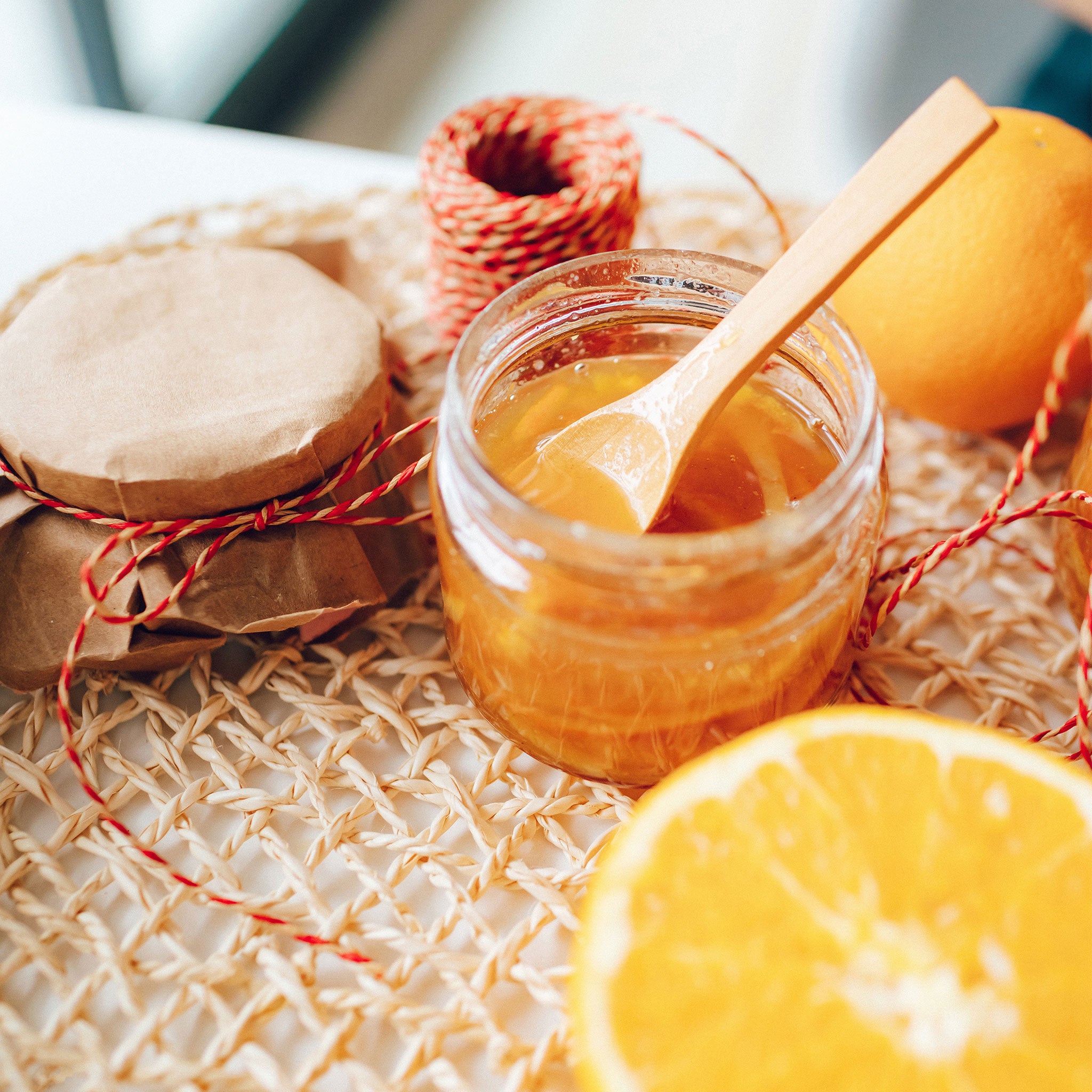
Your drinks, milkshakes, smoothies, teas or infusions...
You can use a teaspoon of manuka honey instead of sugar to sweeten any drink, giving it an unmistakable taste and making you stronger and healthier at the same time. Add it to milkshakes, smoothies, tea and infusion!

